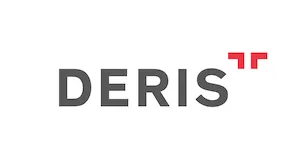- within Intellectual Property topic(s)
- with readers working within the Retail & Leisure industries
- within Intellectual Property topic(s)
- with Inhouse Counsel
Legal Framework
The application in bad faith was taken into consideration by the Turkish Patent and Trademark Office (formerly known as Turkish Patent Institute) in evaluation of oppositions as well as it was by the Courts in invalidity actions in practice, even though the former Decree-Law no. 556 pertaining to Trademarks did not clearly cite application in bad faith among the grounds for opposition. With the IP Code no.6769, which came into force as of January 10, 2017, the practice and law became parallel, since the IP Code accepts application in bad faith as a ground for rejection. Nevertheless, neither the IP Code nor any other laws define the term "bad faith" precisely; therefore, the term is open to interpretation.
What is Bad Faith?
Bad faith is a subjective state based on the applicant's intentions when filing a trademark. As a general rule, intentions on their own are not subject to legal consequences. For a finding of bad faith, there must be an action of the applicant which clearly reflects a dishonest intention firstly. Secondly, an objective standard against which such action can be measured and subsequently qualified as constituting bad faith. In other words, there is bad faith when the conduct of the applicant for a trademark differs from accepted principles of ethical behavior or honest commercial and business practices.
Types of Trademark Application in Bad Faith
In Turkish doctrine, the following are commonly accepted bad faith trademark applications:
- Preemptive trademarks: These trademarks arise from the intent of the applicant to register a trademark identical or very similar to a trademark used by a competitor for unjustified reasons and for the sole purpose of blocking the competitor.
- Ambush trademarks: The applicant's purpose is to ambush the third parties in bona fide. The applicant has no intention to use its trademarks and aims to gain unjustified profit from third parties by blackmailing.
- Transfer trademarks: The applicant's purpose is to take unfair advantage of a well-known trademark by registering the same or very similar trademark for other goods/services, so that they may transfer the good-will created around the subject trademark to his/her trademark
- Registrations by the agent of the proprietor: If an agent or representative of the proprietor of the trademark applies for registration thereof in his own name without the proprietor's consent, such application is rejected upon the opposition of the proprietor, unless the agent or representative justifies his action.
- Preventing trademarks: The bad faith issue is not very clear for these trademarks, as the applicant intends to file applications that may be subject to use in the future. As in many jurisdictions non-use is a ground for cancellation of a trademark or can be used as a defense against the registrant, there is a debate concerning the existence of bad faith in such filings.
- Defensive trademarks: The applicant aims to defend its trademark rights by filing a series of applications that may be similar to its main trademark. In such a way the applicant may enlarge the protection area of its main trademark.
- Repeating trademarks: The applicant files a trademarks identical to his/her previous trademark(s) (both in terms of goods/services and the sign itself) to circumvent genuine use requirements by this re-filing.
- Fraudulent trademarks: The applicant files a trademark application by knowing that the trademark is subject to absolute and/or relative grounds for refusal but concealing these grounds, the application is considered as a fraudulent trademark.
These interpretations of bad faith are generally based on the decisions of the Turkish Patent and Trademark Office (TPTO) and of the Courts.
How to prove the Bad Faith?
The burden of proof of the existence of bad faith lies with the opponent/plaintiff in the proceedings, as the good faith is presumed until the opposite is proven. According to a recent decision of the Supreme Court of Appeals, the bad faith in filing a trademark application is defined as "the intention of blackmailing or making an unfair profit or preventing third parties' trade activities rather than using a trademark". The Supreme Court considers that the application for the registration of trademarks similar to earlier trademarks, even when the earlier trademark is well-known, cannot be deemed to have been filed in bad faith just because of the similarity to an earlier trademark.
This decision is in line with EU practice. In the EU, whether an applicant acted in bad faith when filing a trademark application depends on an overall assessment by taking into account all the factors relevant to the particular case. The following are the most relevant factors for the existence of bad faith according to the EU case law:
- Identity/confusing similarity of the signs.
- EUTM proprietor's knowledge of the use of an identical or confusingly similar sign.
- The dishonest intention on the part of the EUTM proprietor.
As in the EU, the above factors are commonly accepted grounds when evaluating the bad faith claims and defenses in Turkey. However, there are many other examples of bad faith in the trademark application.
The Higher Council of the TPTO has determined in a decision that the re-filing of a trademark subject to a cancellation action cannot be deemed to be in good faith. Moreover, the prior registration shall not constitute acquired right against the new filing. This case is also discussed before the Specialized IP Court of Ankara and the Court approved the decision of the TPTO. Nevertheless, the issue of re-filing of a trademark (not subject to cancellation action) remains open.
In the EU, there is some case law with regard to the re-filing of the trademark to circumvent the law. According to the EU case law, an individual filing a trademark application identical to their previous trademark(s) (both in terms of goods/services and the sign itself) cannot circumvent the genuine use requirements by this re-filing.
Indemnity for Damages
Another important point in the IP Code was that claims for compensation for damage caused by negligence or lack of good faith on the part of the proprietor of the trademark are preserved by the IP Code.
In the past, although in case of a decision of invalidation of a trademark, such a decision shall take effect as of the filing date of the trademark, even when a trademark is registered in bad faith, the use of a registered trademark was not being considered as trademark infringement or unfair competition by the Courts.
Since the beginning of 2010, the Courts reversed their decisions and started to accept compensation claims with regard to the damages caused by the trademark registrations filed in bad faith. This change of practice mirrored to the IP Code and the law clearly preserved the right to claim compensation for damage caused by negligence or lack of good faith on the part of the proprietor of the trademark. Accordingly, regardless of the grounds of the invalidity against a trademark, the party whose rights are damaged due to a trademark registered in bad faith may claim compensation of such damages.
The content of this article is intended to provide a general guide to the subject matter. Specialist advice should be sought about your specific circumstances.



